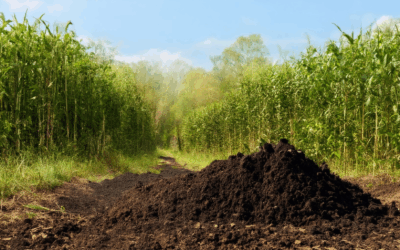Climate-conscious resource use has emerged as a cornerstone of modern sustainability efforts, offering a pathway to reduce environmental impact while ensuring long-term resource availability. As global concerns about climate change intensify, understanding how we can adopt a climate-conscious approach to resource use becomes increasingly vital. This article delves into the intricacies of climate-conscious resource use, exploring its definition, significance, and practical applications. From examining the relationship between resource consumption and climate change to dissecting the differences between eco-friendly and eco-conscious practices, this comprehensive guide aims to address the most pressing questions surrounding climate-conscious resource use. By equipping readers with actionable insights and a deeper understanding of the subject, this article sets the stage for exploring how individuals and businesses can contribute to a more sustainable future. Whether you’re seeking to reduce your personal footprint or looking to implement climate-conscious strategies in a broader context, this exploration of climate-conscious resource use offers valuable perspectives and solutions.
Key Takeaways
- Understanding Climate Consciousness: Recognizing the importance of awareness, personal responsibility, community involvement, sustainable lifestyles, educational roles, and ongoing engagement to address climate change effectively.
- Innovation in Problem-Solving: Leveraging Einstein’s insight that creative and unconventional approaches are vital for overcoming climate challenges.
- Eco-Friendly vs. Eco-Conscious: Differentiating between actions focused on environmental protection and the intent behind those actions, emphasizing the balance between tangible efforts and intrinsic motivation.
- Collective Action for Sustainability: Highlighting the necessity of collaboration and continuous efforts to drive meaningful change towards a more sustainable future.

What is the Climate-Conscious Approach?
The climate-conscious approach refers to a mindset and set of practices aimed at minimizing environmental impact while maximizing positive outcomes for ecosystems and human societies. It involves recognizing the interconnectedness of various aspects of life and making decisions that align with global sustainability goals. Here’s a breakdown of key components:
- Environmental Awareness : Understanding the role of individual and collective actions in contributing to climate change and environmental degradation. This includes knowledge of environmental issues, their causes, and potential solutions.
- Sustainable Choices : Making decisions that prioritize environmental health. This could involve selecting eco-friendly products, supporting sustainable industries, or adopting practices that minimize resource consumption and waste generation.
- Carbon Footprint Reduction : Taking active steps to lower one’s carbon footprint. Examples include reducing energy consumption, using public transportation, adopting a plant-based diet, and investing in renewable energy sources.
- Eco-Friendly Technologies : Embracing innovations that support sustainability. Technologies like solar panels, wind turbines, electric vehicles, and green building materials play crucial roles in reducing environmental impact.
- Advocacy and Education : Promoting sustainable practices through education and advocacy. This could involve spreading awareness about environmental issues, participating in community initiatives, or supporting policies that encourage sustainability.
- Legal and Professional Considerations : In fields like law, integrating climate considerations into decision-making processes. This involves understanding how legal actions and policies can influence environmental outcomes and advocating for those that align with sustainability objectives.
By adopting a climate-conscious approach, individuals and organizations can contribute to a healthier planet and ensure a more resilient future for generations to come.
Resource Use and Climate Change Relationship
The relationship between resource use and climate change is complex and bidirectional. Human activities that deplete natural resources contribute significantly to climate change, while climate change itself exacerbates resource scarcity.
Key Factors Linking Resource Use to Climate Change
- Energy Production: Burning fossil fuels for energy releases significant amounts of greenhouse gases (GHGs), primarily carbon dioxide and methane, which trap heat in the atmosphere and drive global warming.
- Deforestation: Cutting down forests for agriculture, logging, and urban expansion removes carbon sinks, increasing atmospheric CO2 levels and contributing to climate change.
- Overfishing and Marine Resource Exploitation: Overfishing depletes fish stocks and disrupts marine ecosystems, affecting biodiversity and the planet’s capacity to absorb CO2.
- Industrial Activities and Consumption Patterns: Resource-intensive industries, such as manufacturing and construction, often rely on high-energy processes that emit GHGs and contribute to environmental degradation.
- Biodiversity Loss: Habitat destruction from resource exploitation reduces biodiversity, weakening ecosystems’ resilience against climate change impacts.
Consequences of Unsustainable Resource Use
Unsustainable resource use leads to increased GHG emissions, reduced carbon absorption capacity, biodiversity loss, and ecosystem destabilization, all of which amplify climate change effects.
Sustainable Resource Management and Mitigation
Sustainable practices, such as renewable energy adoption, reforestation, responsible fishing, and reducing consumerism, can mitigate these impacts and help adapt to climate change.
Conclusion
Addressing climate change requires balancing resource use with environmental preservation to ensure future generations have access to essential resources while maintaining planetary health.

What is Climate-Conscious Eating?
Climate-conscious eating is about making food choices that minimize your environmental impact while promoting sustainable practices. It involves being mindful of the entire lifecycle of your food—from production, transportation, and processing to disposal. By making informed decisions, you can reduce your carbon footprint and support a healthier planet.
Key Components of Climate-Conscious Eating
- Know Your Food Origin : Opt for locally-sourced and seasonal foods to reduce transportation emissions. Support farmers and producers who use sustainable methods.
- Choose Low-Carbon Foods : Prioritize plant-based proteins like beans, lentils, and grains over meats with high carbon footprints. Fish, though not perfect, often has a smaller impact than beef.
- Reduce Waste : Minimize food waste by planning meals and shopping wisely. Compost scraps to return nutrients to the soil.
- Support Sustainable Practices : Look for products certified by organizations like Fair Trade or USDA Organic. These labels indicate environmentally responsible practices.
- Limit Packaging : Buy bulk goods and choose products with minimal packaging to reduce waste.
- Avoid Overconsumption : Eat moderately and avoid overstocking on non-essential items to align with resource conservation.
- Adopt Alternative Proteins : Explore plant-based alternatives like tofu, tempeh, and lab-grown meat to reduce reliance on livestock farming.
- Conserve Water Resources : Be mindful of foods with high water footprints, such as almonds, and consider alternatives.
- Engage with Technology : Support innovations in sustainable food production, such as regenerative agriculture and vertical farming.
- Advocate for Change : Encourage policymakers to invest in sustainable farming and food systems through community efforts and petitions.
Benefits of Climate-Conscious Eating
- Environmental Protection : Reduces greenhouse gas emissions, deforestation, and water usage associated with conventional farming and meat production.
- Healthier Diet : Promotes a balanced diet rich in fruits, vegetables, whole grains, and legumes, contributing to overall well-being.
- Sustainable Communities : Supports local economies and strengthens food security by reducing dependence on industrial agriculture.
By adopting climate-conscious eating habits, you can take a meaningful step toward combating climate change while enjoying nutritious and delicious meals.

What Does It Mean To Be Climate Conscious?
To be climate conscious means to be aware of and actively respond to the changing climate, recognizing its impact on the environment and society. It involves understanding how human activities contribute to climate change and taking steps to reduce one’s own impact.
Key Components of Climate Consciousness
- Awareness: Being informed about current climate issues, such as rising temperatures, melting ice caps, and extreme weather events.
- Personal Responsibility: Making sustainable choices in daily life, such as reducing waste, conserving water, using renewable energy, and supporting sustainable products.
- Community Involvement: Engaging in environmental initiatives, whether through volunteering, advocating for sustainable policies, or participating in local clean-up efforts.
- Sustainable Lifestyle: Adopting a low-carbon lifestyle by using public transportation, biking, or walking, and supporting businesses that use renewable energy.
- Educational Role: Informing others about climate issues and encouraging collective action through sharing information and engaging in discussions.
- Ongoing Engagement: Staying updated on climate news, attending workshops, and participating in campaigns to stay informed and contribute to solutions.
Climate consciousness requires a combination of knowledge, action, and collaboration to address the challenges posed by climate change. By fostering awareness and taking responsible steps, individuals can contribute to a healthier planet for future generations.
What Did Einstein Say About Climate Change?
Albert Einstein, the renowned physicist, famously remarked:
We cannot solve our problems with the same thinking we used when we created them.
This profound statement highlights the necessity for a paradigm shift in addressing complex challenges like climate change. Einstein’s words emphasize the importance of innovative and unconventional approaches to overcome obstacles, aligning perfectly with the urgency of environmental issues today.
- Einstein’s quote underscores the need for creative problem-solving.
- It suggests that traditional methods may not suffice for modern dilemmas.
- The statement is particularly relevant to climate change, requiring fresh perspectives and solutions.

Eco-Friendly vs. Eco-Conscious: Understanding the Key Differences
Eco-friendly and eco-conscious are often used interchangeably, but they represent distinct approaches to environmental stewardship. Here’s a breakdown of their differences:
- Eco-Friendly: This refers to actions or products that minimize environmental harm. Eco-friendly practices include recycling, using renewable energy, and choosing sustainable products.
- Eco-Conscious: This describes an awareness or sensitivity to environmental issues. An eco-conscious individual considers the environmental impact of their decisions before acting.
Eco-friendly focuses on the what —the tangible actions taken to protect the planet. Eco-conscious, on the other hand, emphasizes the why —the underlying motivation to care for the environment.
For example, buying organic food is an eco-friendly choice because it reduces chemical use and promotes sustainable farming. Meanwhile, an eco-conscious decision might involve supporting local farmers to contribute to community sustainability.
In summary, while both terms are essential for environmental efforts, eco-friendly is about the action , and eco-conscious is about the intent .




0 Comments